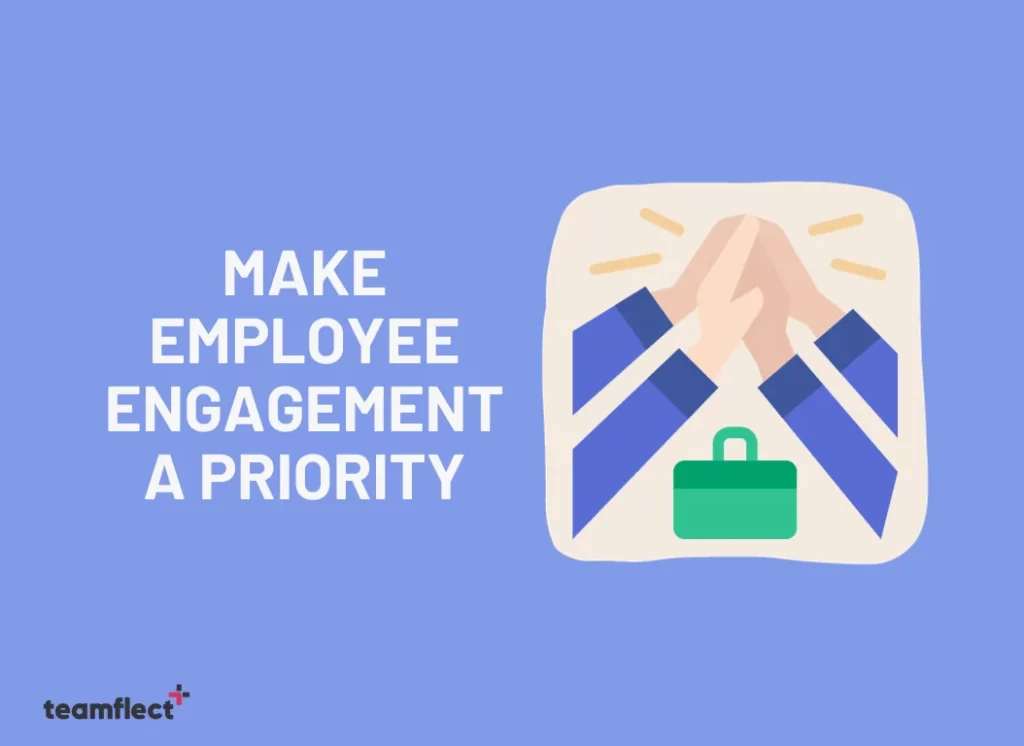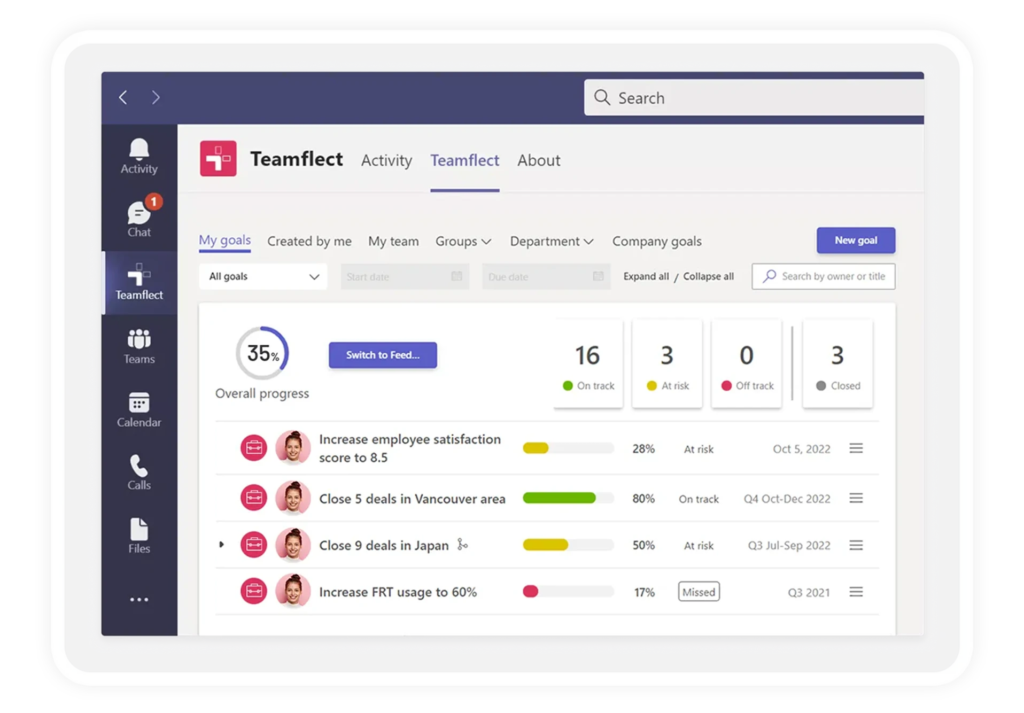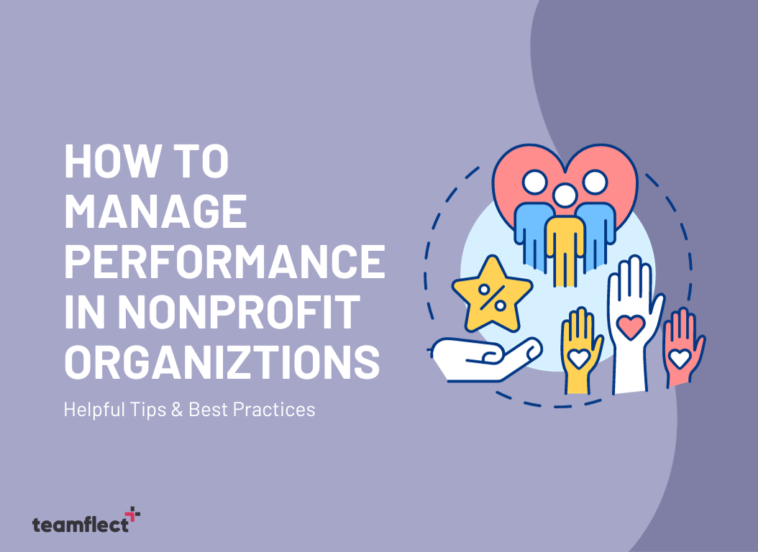For the people on the outside looking in, nonprofit performance management has an aura of mystery around it. Nonprofits aren’t like the run-of-the-mill, ordinary companies people are used to. So the intricacies of managing one often get lost in the shuffle.
As mysterious as they are, nonprofit organizations are still made up of individuals brought together by a cause. Thus there is quite a bit of managing to do. Nonprofits often have goals they want to accomplish, and in pursuit of those goals, they hold and manage events, form relationships with both communities and businesses, and most importantly, manage performance.
This is where nonprofit performance management becomes a vital issue. Is it any different from regular performance management? How should nonprofits manage performance? What is the role of performance management in nonprofit organizations?
As Teamflect, nonprofit organizations make up an impressive amount of our users. That is why this week, we wanted to give back to the incredible nonprofit organizations in and outside of our company. Stick with us as we present 9 tips on nonprofit performance management (And something extra at the very end.).
9 Nonprofit Performance Management Tips
While there is a well-placed air of naivete surrounding nonprofit organizations, it is incredibly important to remember that every time a nonprofit sets goals, a huge amount of project and performance management has to take place.
In that regard, it is extremely important to form and maintain strong relationships with the members of a nonprofit team, as you are managing their performance. Setting clear and concise tasks, all surrounding the major goal of your nonprofit is another essential aspect of nonprofit performance management.
1. Have A Remote Team
Nonprofits have a great amount of freedom that comes with not being a traditional company. They don’t have to fit certain molds. So, they can easily form remote teams that don’t have to stay anchored at a brick-and-mortar location.
Having a remote team not only allows nonprofits to expand their remote workforce and recruit members from all around the globe but also heavily cuts down on the cost of operations.
With the right tools such as efficient performance management software or dedicated community managers, nonprofits can benefit immensely from working remotely.
2. Leverage Real-Time Performance Management
The initial stage in putting real-time performance management into practice is carefully selecting a metric that tracks performance and offers feedback on how well the person contributes to the goals set by the organization. Because each organization is unique, there isn’t a single data point that can be used for all of them.
Director feedback may be given considerably more easily when performance measures are used. The chances that a team member will take the feedback personally decreases when data reveals the reality.
If the employee isn’t hitting the goals, the manager and employee must change direction. So that there aren’t many surprises when the yearly evaluation period comes along. The employee is aware of their performance level because they have been getting feedback throughout the entire year.
3. Focus on KPIs
Nonprofit organizations offer products to help the communities they serve. KPIs can be used to assess and enhance the performance of nonprofits. Setting guidelines and expectations for your organization can be facilitated by being aware of some of the KPIs for nonprofits.
To determine how to fulfill their unique missions, requirements, and ideals, nonprofits can utilize specific sets of KPIs. There may be more KPIs focusing on fundraising engagements, and participation for a nonprofit that routinely holds fundraising events.
Organizations that concentrate on using social media to spread awareness may evaluate their success by looking at traffic to pages, email subscriptions, and online donations.
3. Make Employee Engagement A Priority

A common mistake outsiders make when they are looking at nonprofits is to assume that working in one is all sunshine and rainbows.
Working at a nonprofit organization has all the difficulties and challenges surrounding a regular workplace, with the added responsibility of team members working towards a goal that they actually believe in.
That previous line is crucial in nonprofit performance management. It is essential to keep the stresses of day-to-day operations from making team members forget what all their hard work is actually for. Burnout is still a very possible condition for members of nonprofit organizations.
That is why focusing on employee engagement has great benefits. Giving recognition, holding small team member appreciation events, and showing appreciation through 1-on-1s with team leaders, all go a long way.
4. Implement Your Mission to Your Performance Management
It is important that your performance management aligns with your mission. Examine the fundamental values of your organization. See if your vision is supported by your fundamental values. If so, you can use them in performance management.
Here is one application. Let’s assume that creativity is important to your organization. Utilizing a combination of quantitative and qualitative measures, you can monitor the performance of team members.
Quantitative indicators, such as profits, market share, or ROI, are numerical measures that can demonstrate the impact and efficacy of your creative activities. Qualitative indicators are descriptive metrics that may track particular elements of your creative activity, like comments, stories, and testimonials.
To acquire a comprehensive and balanced understanding of your creativity results, you should utilize both kinds of indicators.
5. Communicate with Other Nonprofits
Nonprofit organizations frequently view the implementation of performance management as a difficult endeavor. To ease the performance management process nonprofit organizations should consult companies that have already been putting resources into performance management and seeing rewards.
Such discussions are an invaluable way to discover problems and potential fixes as nonprofits start to put performance management systems in place and create cultures that are results-driven.
6. Project Management Approach
Having a project-based approach to your goals when managing performance within a nonprofit can prove incredibly useful. Treating every event, campaign, or individual responsibility as a separate project of their own can help greatly in nonprofit performance management.
While managing members of a nonprofit team, it is important to set tasks with clear instructions and deadlines. At the completion of those tasks, it is crucial to give feedback and recognition to the team members for all their hard work.
Setting individual goals for team members, having automated check-ins and goal updates, and feedback sessions after completion all play a huge part in assuring success in all the important projects your nonprofit is undertaking.
7. Encourage 360-Degree Feedback
When working in a nonprofit, centered around a mission, it is extremely important for all voices to be heard. It is equally important for all the team members to learn from each other and grow in the process of achieving their goals. This is where 360-Degree feedback comes into play.
Each member of a nonprofit organization brings something new and unique to the table and each member can learn a lot from each other.
Establishing a strong feedback culture in your nonprofit is a great way to ensure longevity and engagement. Some may believe that implementing 360 feedback is cumbersome and difficult but there are intuitive and simple templates that make this task a walk in the park.
8. Express Gratitude to Your Volunteers

Volunteering is a core component of nonprofit organizations. Your volunteers contribute their time, effort, and on occasion income. So you should find ways to express your gratitude for their work. Each one of your volunteers requires a unique appreciation method, which will strengthen your bond with them.
The options are unlimited, but there are strategies that you may include in your list.
You may organize an event to thank the volunteers. You may even invite family and other guests to the event.
People participate in volunteer work because they wish to improve the world. Like us, they lead hectic lives and juggle multiple commitments. Therefore, they won’t keep giving their time and effort if they don’t feel like they’re being appreciated.
Appreciating and praising your volunteers is very important and there is a way of achieving this more easily. By using Teamflect’s praise software you will be able to express your gratitude consistently.
9. Performance Management Software
As the size of your team grows, so does the level of difficulty in nonprofit performance management. That is why investing in performance management software can take an immense amount of load off of team leaders, saving valuable time that can be put towards achieving your nonprofit’s mission.
Using performance management software makes forming a remote team far easier, gives leaders the right tools for engagement, and allows them to implement their ideas on a much larger scale.
When software for non profits are considered, Teamflect is an appealing choice for many organizations and a reliable companion for a large number of Microsoft Teams users. Furthermore, it is essential for the operations of many nonprofits.
With Teamflect, more than 75 nonprofit organizations all over the globe optimize their nonprofit performance management. It’s one of the best project management software for nonprofits out there!

The benefits of using Teamflect include:
- All nonprofit organizations are welcome to receive discounts of up to 60% offered by Teamflect.
- You can create talking points and modify the agendas for your meetings.
- Within Teamflect, you may take both public and private notes.
- With fully integrated Microsoft Teams integration and customizable feedback templates, Teamflect makes it possible to accelerate the 360-degree feedback process. This will make it simple for you to incorporate constant feedback into daily operations at your company.
- Saving a ton of time and effort while managing finances is one of the advantages of using Teamflect.
- The ability to define, monitor, and assess goals without leaving Microsoft Teams is one of the best solutions offered by Teamflect which is the best HR software for nonprofits.
Closing Words
For us here at Teamflect, nonprofit performance management is a subject that is very near and dear to our hearts. It isn’t a concept we set out with. It is something we learned and fell for organically, thanks to the many incredible nonprofit organizations in our community.
That is why we offer a 60% discount when we are working with nonprofits and we are proud of it! You should try Teamflect to see if it’s the software for non profit organization you operate. Since you are probably operating on a shoestring budget, trying this free project management software for nonprofits will definitely worth it!





